On The Record with Leslie Entwistle, Water Polo Pioneer Growing the Sport in the Mid-Atlantic Region
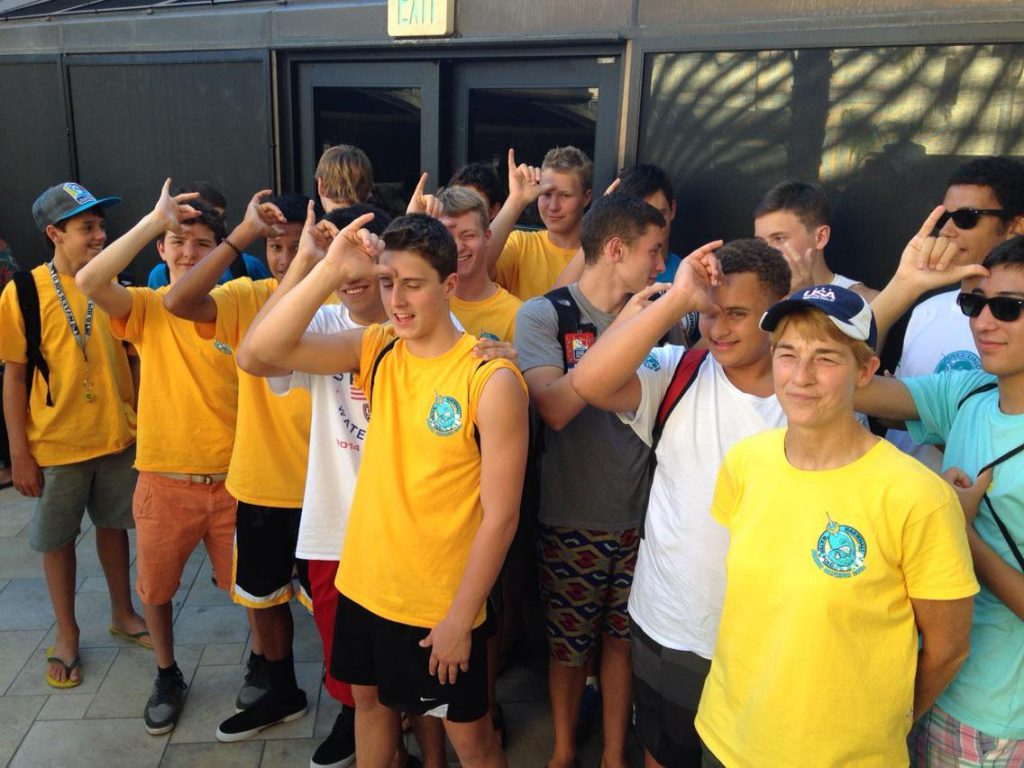
To understand just how much American women’s water polo has changed the past four decades, just speak with Leslie Entwistle. A member of the first-ever U.S. Women’s National Team, in 1978, she competed at the 1978 World Aquatic Games in West Berlin, Germany, at the first-ever 1979 World Cup in Fresno, California and the 1981 World Cup in Sydney, Australia.
A 1980 graduate of Slippery Rock University, under Richard “Doc” Hunkler, the legendary swim and water polo coach, Entwistle earned All-America honors following her sophomore, junior and senior seasons.
Since graduating with a degree in physical education, she has remained devoted to polo, coaching youth teams with the Naval Academy Aquatic Club and with the Capitals in Washington, D.C. as well as being a zone coach for USA Water polo from 2011 – 2016.
Entwistle, who recently took a position with The St. James, a massive 450,000 square foot sports complex in Springfield, VA, spoke with Swimming World about her impressive past—and the exciting future for East Coast polo she hopes to build upon.
-How did you get your start in water polo?
I grew near Annapolis in Severna Park, and learned to swim in the river. A fish from day one, I was on a swim team in the river then transferred to year-round swimming when I was eleven.
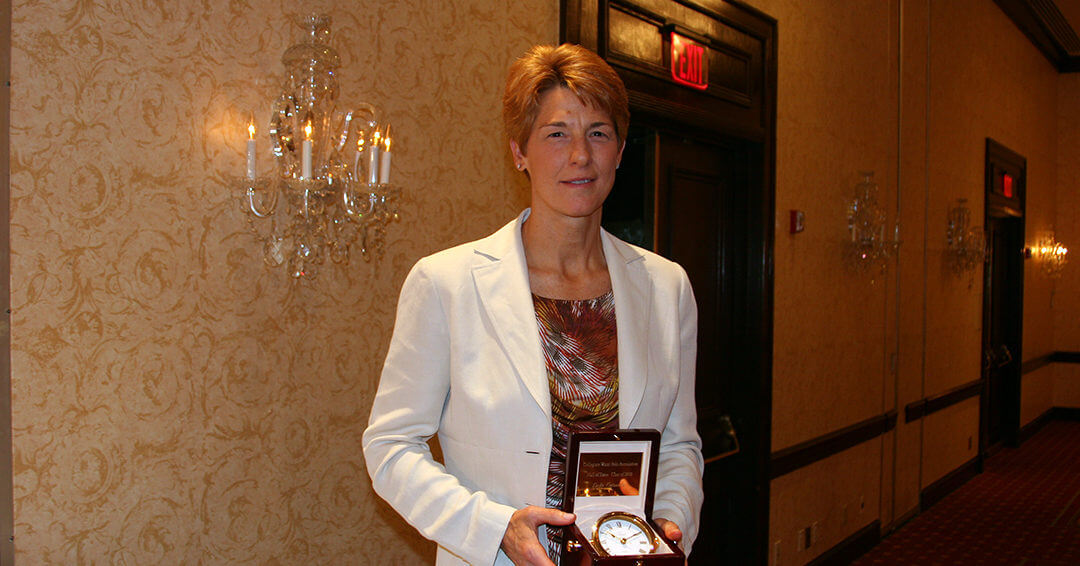
Coach Entwistle at her 2010 induction in the CWPA Hall of Fame. Photo Courtesy: CWPA
I learned about water polo through a friend of mine who wanted to go to Slippery Rock. I went during senior year for a recruitment visit. Once I saw the game that was it. Polo fit everything I loved: [a] ball sport plus the water.
-So that’s how you ended up at Slippery Rock?
I wanted to go to because it was well known for turning out good teachers—so I wanted that. Physical education was my major. And I wanted to experience something different that had more excitement and more camaraderie. Add in the ball—which for me was a big asset.
I loved the water polo there; Doc Hunkler was my instructor for swimming and water polo. I learned a lot from as well as from people like Lynn Kachmarik [and] Tracy Gillespie—both are still swimming and competing at the master’s level.
[The Fighting Flamingos: Ready to Play for 40 years]
Slippery Rock made a big push for water polo to get recognized nationally. We were one of only four women’s teams at the time that had tryouts for the first women’s national team. Because I’d made All-American at collegiate nationals, I was invited out to that first try-out in 1978 at Fullerton by Stan Sprague, the coach.
– There are hundreds of examples of success in swimming; making the choice to play a relatively unknown sport like polo must have been challenging.
When I tried the sport I fell in love with it, but I kept swimming in college because I had to stay in shape for water polo—not so much because I loved swimming.
At collegiate nationals I met the other women who loved water polo. [We had] this infectious passion that we all had to make it a well-known sport and to use our platforms to help [it] get some notoriety. Many of us went on to become coaches afterwards because we knew that it was a great sport for every athlete, especially women who liked aquatics.
– As Kyle Utsumi has written, it took a generation of pioneers like yourself to go into the coaching ranks and build women’s polo—both from the top down and from the ground up.
That’s correct. There were a few of us who went back to our hometowns and started teaching the sport. It caught on, and—as for becoming a collegiate sport or a highly competitive sport for accomplished athletes—that took a good 20 years.
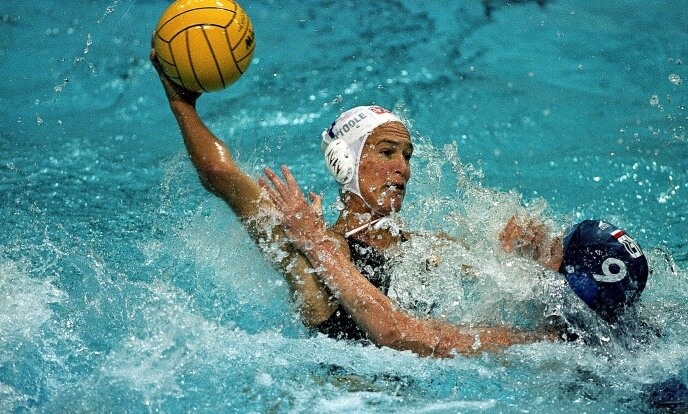
Maureen O’Toole. Photo Courtesy: Getty Images
I remember Maureen O’Toole when she first started, she was a phenomenon then in 1978. She was one of the first women to play on a men’s collegiate program at Long Beach. She really helped women earn respect in a male-dominated sport and helped us earn more international opportunities via team success at the FINA Cup. She was and is a great athlete and a great inspiration for all women.
We all rallied behind her and in 2000, when the women finally became an Olympic sport for the first time in Sydney, Australia, there was discussion about cutting her from the team because she was too old.
There was a big uproar from women—internationally [as well as] nationally to keep her on. She was the top female athlete in the world and had been one of the most visible leaders to get women’s water polo up to that point.
– It seems to be yet another example of just how hard you and your fellow female athletes had to fight for recognition.
That’s true; the first year we were out there as an international team, we all had to find a place to stay and jobs wherever the national team coach lived that year. It happened to be in Fullerton, and we had a really great support system. They helped us in housing so we could stay and train for the summer, and with finding jobs. Every penny that we earned went right back into our training, because there was no financial support.
The men had financial support. They would fly for weekends of training wherever the coach was and got a small stipend for those weekends. We always we had to pay our own way.
I had to rely on my parents and my friends back home. They would run swim-a-thons and bake sales just to get enough money so that I could go on the trip, because we also had to pay for travel. Not only did we have to pay for training, we had to pay for the trip—like to West Berlin for the World Aquatic Games, which was amazing.
It was very expensive, and people decided to move on and get a full-time job. So we weren’t able to retain a lot of the highest level players from year-to year and build our strength. Of the Californians that started, most of them played for over eight years—some well into fifteen years on the national team. They became the representatives for our sport. It was just amazing to watch that camaraderie form and all the support that we got—inside the system in California as well as our families back home.
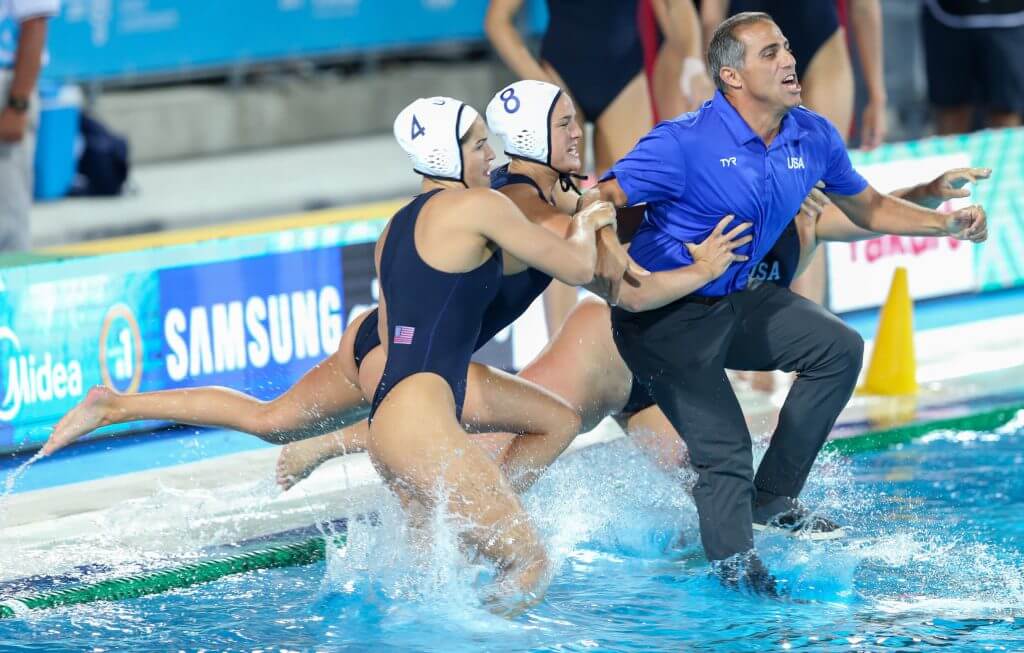
Adam Krikorian & Team USA take victory plunge at 2017 FINA World Championships. Photo Courtesy: SIPA USA
– The U.S. women’s team is now so successful—10 straight tournament titles and double gold medalists. Do you look at that and feel a sense of pride for foundational efforts that have paid off tremendously?
Yes, the payoff is still building. I got to meet a few athletes back when I first started Capital Water Polo—they came to ODP trainings and brought their gold medals. When they found out that I was on the very first women’s national team, they were so appreciative of what we had done—creating a foundation nationally and internationally for our current generation. I’m amazed when I watch these women play and how good they are.
It’s exciting to know that I had a little piece in that.
– Your experience with Doc Hunkler and Slippery Rock launched you into a career playing on coaching polo. How has that progressed?
Water polo is still very much my passion, although I also love teaching health, physical education and fitness. It’s my passion as I view it as a sport that has an important role in youth development—from the aspect of learning perseverance and mental strength. Developing social skills that are critical for success as a team and also for becoming one of the most fit athletes, because water polo is the toughest sport endurance-wise.
I’m lucky enough to meet these athletes, guide them to develop strong assets going into their adult lives. Even now I’ll be walking around Annapolis and I’ll hear my name called by one of the kids I coached 20 years ago who has kids of their own. It’s amazing to talk to them and hear the stories they tell about what they earned from playing water polo.
It’s a sport that gives us special skills and I always look forward to sharing that with kids.
– To that point, one of your former age group athletes, Andrew Mavis, has enjoyed phenomenal success playing for George Washington’s men’s team.
Andrew is a very special person in my history. He came to us from a small program in Lawrenceville, NJ, that didn’t do any USA Water Polo [competition]. So when he learned through his uncle from [Washington, D.C.] that there was this other opportunity, he came to Navy. Our coaches always looked at give kids who didn’t have opportunities on their own a chance to progress as a player and to be excited about the sport.
At 10 years old he walked on deck and said: This is what I want to do. I looked at his abilities—he was a natural center right out of the gate. We worked together every summer for years. He went to every JOs with our team and came down almost every weekend from Princeton where he lived, and became a top scorer for us as a 14U [player].
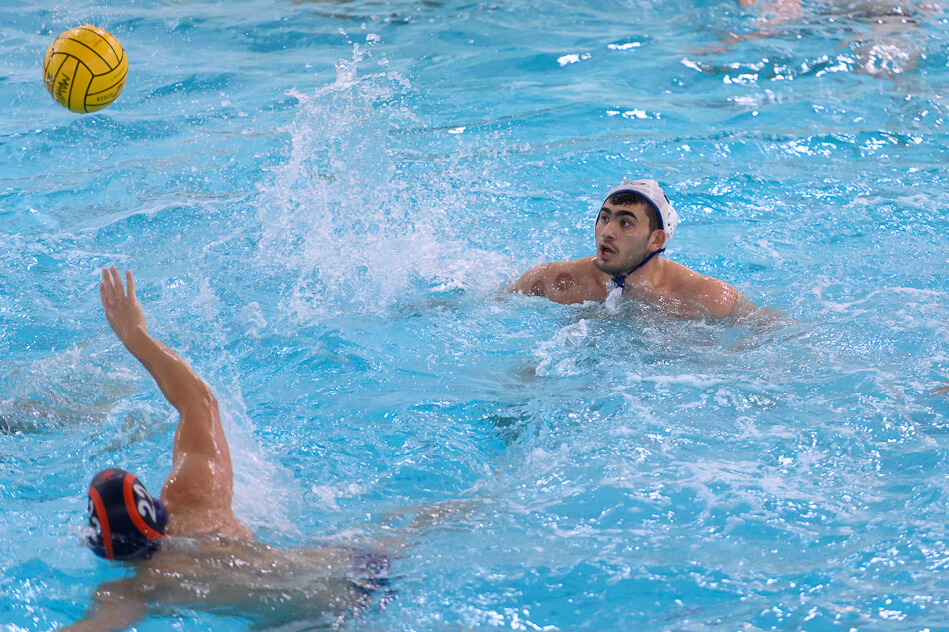
Andrew Mavis (white cap) during the 2018 Mid-Atlantic Men’s Water Polo Conference Final. Photo Courtesy: Gloria Kushel
I saw him blossom when Princeton added their high school program where he got great coaching from Derek Ellingsworth and his staff. Andrew developed into a strong, determined athlete and a great young man to work with. I’m happy I had a role in that.
– You mention Mike Schofield. What was it like to work with him?
I was with Navy for 17 years—I took a sabbatical for four years when I was coaching NCAA DIII women out of Cal State Hayward—which is now Cal State East Bay.
Mike challenges everybody. There’s no one that he does not challenge, whether it’s a coach to be more productive or use the pool more efficiently; making sure all the tournaments are run well.
[On The Record with Mike Schofield, Legendary Navy Water Polo Coach Turned Referee]
We had multiple roles in the club system—I wasn’t just a coach on deck. I’d advise the kids on collegiate choices or nutrition or behavioral challenges to support their performance and personal goals. Mike was always an advocate for the kids—he was never easy on them. He urged them to rise to the next level or challenge.
I became a strong coach through that system. I’m thankful for that experience to be challenged every day.
– Given that we’re focusing so much on the East Coast, how important is it to the sport to have an Easterner like Ashleigh Johnson enjoy so much success?
If you look at the players who came out of Slippery Rock, you’ve got some incredible, international-acclaimed athletes. Ashleigh’s a special person as well. I know her coach, Carroll Vaughn, head coach of the Miami Riptides who brought Ashleigh up for tournaments at Navy. I also got to know Carroll because she is an advocate like me who wants more high-level playing opportunities for women.
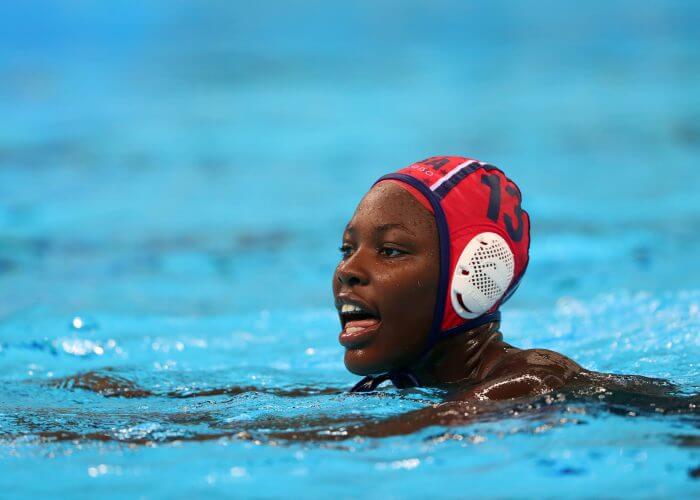
Ashleigh Johnson. Photo Courtesy: Rob Schumacher-USA TODAY Sports
In the middle of Florida on Presidents’ Day weekend, we took teams down with Capital and we never had enough players for our own girls’ team. I would call [Carroll] and she’d say: Sure! I’m happy to help.
She created an environment where Ashleigh could gain confidence and excel. She’s a great person—I can’t say enough about Carroll. She invests in each athlete as an individual to get them to the highest level.
Ashleigh Johnson is the epitome of her dedication with that group down [in Florida]. Everyone you talk to down there just raves about Carroll Vaughn.
I do want to mention what I’m focused on as well; there are many up and coming athletes from the East Coast that are being looked at very closely by Division I recruiters as well as National Team coaches. There’s the kids in Greenwich—Kayla Yelensky, Kaila Carroll—and Isabel Williams, the goalie from Navy. We have some amazing athletes coming out of the East Coast that are getting more recognition. A lot of that has to do with the fact that the ODP system has worked well for the East Coast.

Kaila Carroll of Greenwich Aquatics
We’ve learned—and I coached ODP for five years—we learned that if we can get the athletes to step up at ODP nationals and get recognized by these national team coaches, then they’re on the radar for collegiate coaches. That’s exactly what’s happening for us. In 2016, my last year coaching with the women, I was the head coach for the zone, but I had the developmental side. I took my girls to a national ranking of third at ODP. Chris Ramsey [CEO of USA Water Polo] came out and gave me the team medal [and said]: You tell Schofield you got the highest placement ever for any team on the East Coast.
I said: Nah, I don’t think I’m gonna do that [Laughs].
All the girls are exceptional, and they took it to those California teams—we’re talking hand-picked teams. And we got third. There were a lot of heads being turned there and a lot of the girls got recognition through that system.
– A challenge in the Northeast Zone, where I am, is finding the right level of competition for players who don’t have access to programs at Greenwich, Chelsea Piers or Navy.
To keep these kids moving at a fast pace, you need to involve them at least quarterly if not more in some high-level competition from JO Qualifiers, trips to Florida or Kap 7, high level games at Tri-State League. Kim Tierney-Wang started Tri-State League a few years ago, and it’s growing, with more athletes. But they’re representing their club teams; sometimes the competition can be high level, sometime not, depending upon the game set-up.
Those quarterly tournaments that Chelsea Piers or Greenwich hosts are important for our kids when they want to do some regional evaluations—kind of a litmus test.
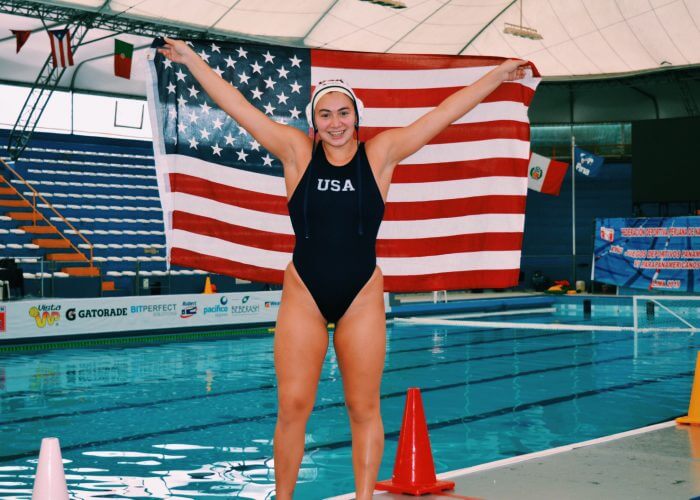
Kayla Yelensky. Photo Courtesy: Alex Yelensky
The last two years my Capitals team committed to drive up Connecticut for Tri-State competition because we know that most of the high-level athletes are coming out of the Greenwich program. We East Coast coaches need to do that for our water polo players as well. Just staying in their home towns and playing doesn’t give them the flavor of what it’s like to compete at a higher level. They need that exposure every six weeks to take back home and get excited about training to get to the next level.
That Presidents Day tournament [the South Florida International Tournament in Coral Springs] is an important event. The JO qualifiers, the Snowball Showdown at Chelsea Piers at the end of January. There’s a couple of other tournaments—the Annapolis Classic that Greenwich drives down to in the fall—we want to engage our kids in those bigger competitions so they get tougher match-ups, even if they’re outscored by 15 goals. They’re still playing a one-on-one game against better players and they’re learning; the experience teaches them what to do and reinvests them in the process.
– You’re now committed to a whole new venture—growing an age group club program in a fantastic new facility down in Springfield, Virginia.
I started looking at The St. James in 2017 to develop a club team and because our pools are too small for effective training. The St. James wants to create their own program from within, so that’s what I’m leading at this new state of the art, Olympic pool facility.
My goal now is growing the sport at every age and every skill level for more participation in the MD/VA/DC region. I will be adding another club program and it’s going to take some time to build. We’ll build a foundation through splashball and introductory skills classes and swim lessons.
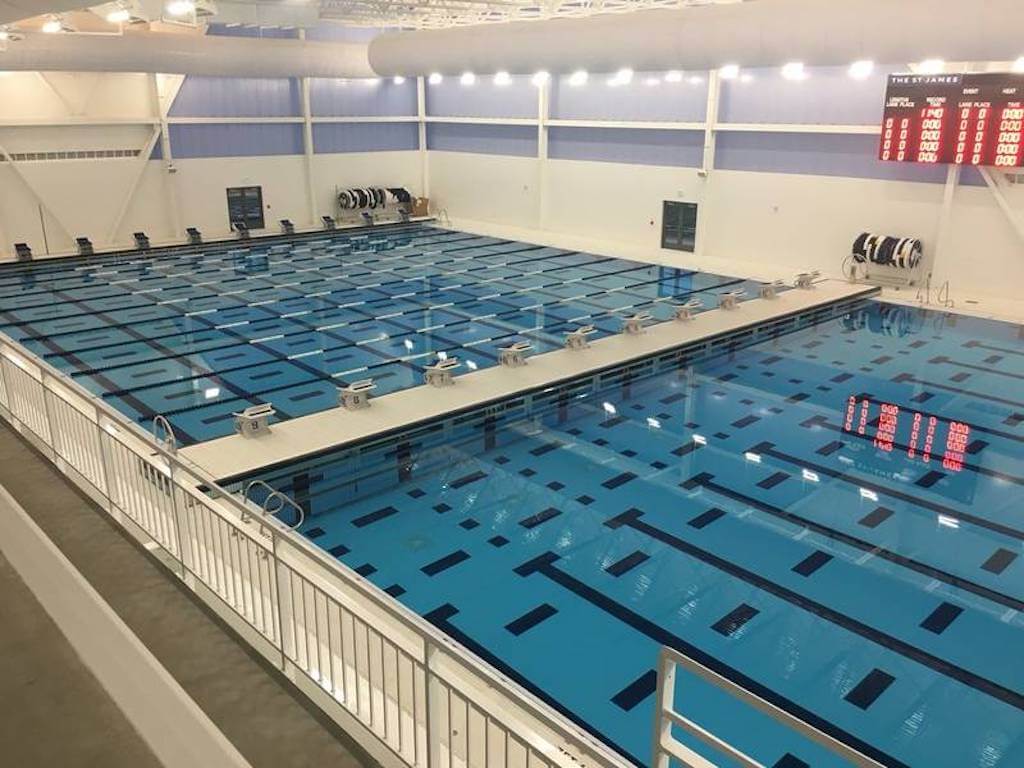
The new aquatics facility at The St. James. Photo Courtesy: The St. James
We’ll also offer high-level tournaments as often as we can to [teams] in our region because we know our region needs more competitive events. Plus, we are located in the perfect place to connect the developing water polo communities in connect Richmond, Greensboro. Navy, Philadelphia, Pittsburgh and Princeton—The St. James pool will expand on Navy’s history of hosting multiple high-level tournaments in the southern end of the zone.
I’m focused on getting people in the door of a 50-meter, all deep facility, which is absolutely gorgeous, and getting exposure for the sport outside of already-developed areas like Annapolis.
I want to make The St. James a destination as well as a foundation to grow a program in-house to support local and regional teams.
– Given the growth of collegiate water polo in the East, how will deserving East Coast athletes get access to DI rosters and scholarship support?
I see the building blocks becoming stronger. The foundation is connecting across the zone. Ten years ago we had Princeton, Navy, Greenwich and—right next door—Chelsea Piers as the prime clubs. In just the last six years we’re starting to see many more programs coming up, getting stronger—Wilson, Cumberland Valley, Upper Dublin [in Pennsylvania]. There’s clubs popping up and coaches seem to be more committed to building connections within the zone and outside of it to provide exposure events for their athletes—and teach them what’s it’s like to be nationally recruited, or even just apply to a college.
We’ve already been doing that with ODP, the addition of The St. James is going to help build a viable connection in the Richmond area and North Carolina. Now we will have more opportunities for more teams to compete for a weekend and get high-level exposure—and keep supporting each other’s clubs to build a more sustainable and competitive region at this end of the Northeast Zone..
We need way more events in our zone; California kids are playing two leagues—a Wednesday-night league and a weekend league—almost year round. We have a high-level event every four to six weeks. We need more of those to keep our athletes primed and moving at a faster pace—and that’s what I am creating at The St. James.



